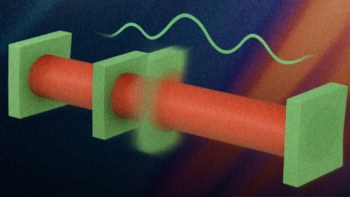
Sensors that use light to trap, analyse and then release tiny objects such as bacteria or DNA are one step closer thanks to new computer simulations done by researchers in the US.
The team modelled the optofluidic interactions that occur when a liquid flows through a tiny channel next to an optical waveguide. The work could lead to new “lab-on-a-chip” sensors that could be used in a wide range of areas including medicine and security.
In such optofluidics sensors, the tiny objects of interest would be mixed with a fluid that would flow through tiny channels next to solid waveguides. When light is passed through the waveguides, it would create a short-range evanescent electric field in the channel that would trap tiny particles. While being held the objects could be studied using analytical probes, before being released.
However, it has proved very difficult to predict exactly how objects will behave in practical optofluidic systems. Now, researchers at Cornell University have devised a “stability number” that describes the conditions under which it is possible to transport an object optofluidically (Nanotechnology 19 045704).
Swept away
“If the stability number is greater than one then the particle will be confined to the waveguide and can therefore be transported along it using optical forces,” said Cornell’s David Erickson. “If the stability number is less than one then the particle will diffuse or be swept away.”
The team’s numerical results consider two classes of optical waveguide — a silicon waveguide operating at 1550 nm and a polymer waveguide operating at 1064 nm — located at the bottom of a simple microfluidic channel.
“We believe that the silicon-based system, with its high refractive index contrast, is more suited to trapping nanoscale objects, such as DNA or quantum dots,” said Erickson. “The polymer-based system, as we have already demonstrated experimentally in another paper, is very appealing as a cheap platform for guiding micron-sized objects, such as biological cells.”
Stability maps
For both systems, the group has generated “stability maps” that cover particles measuring from 600 to 300 nm in diameter. The charts provide a range of flow velocities where particle-waveguide trapping is likely to be successful based on three-dimensional finite element simulations. Additionally, the data highlights critically unstable regions where the drag force on the particle is stronger than the calculated trapping force.
So far so good, but what about moving to smaller particle diameters? “As the particle approaches tens of nanometers in diameter, its relative surface area to volume ratio increases and surface-particle interactions, such as adhesion, will become stronger,” explained Erickson. “For small molecules, the approximation of a spherical continuous particle will not be valid and it may become necessary to account for non-uniformity in the particle structure and makeup.”
As Erickson mentioned, the group has already demonstrated the optofluidic trapping and transport of polystyrene beads using polymer waveguides. Now the team is planning to work with more advanced photonic devices, such as ring resonators, and will complement its research with additional simulations.



